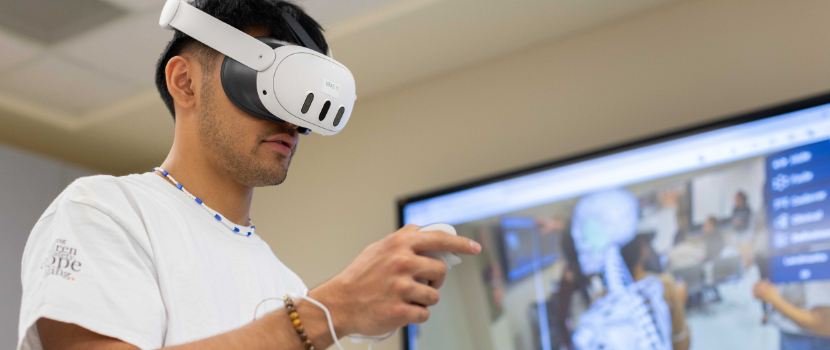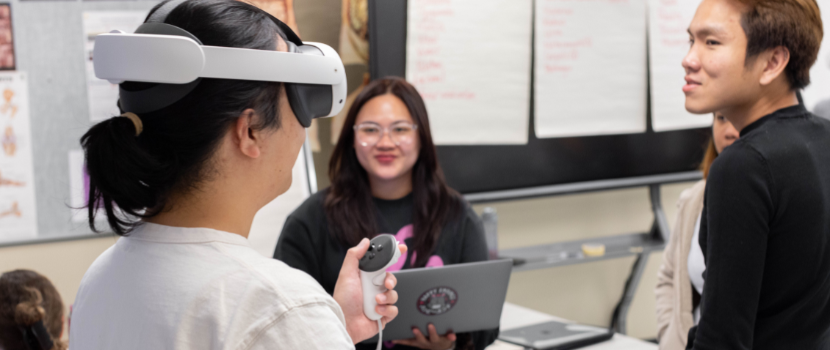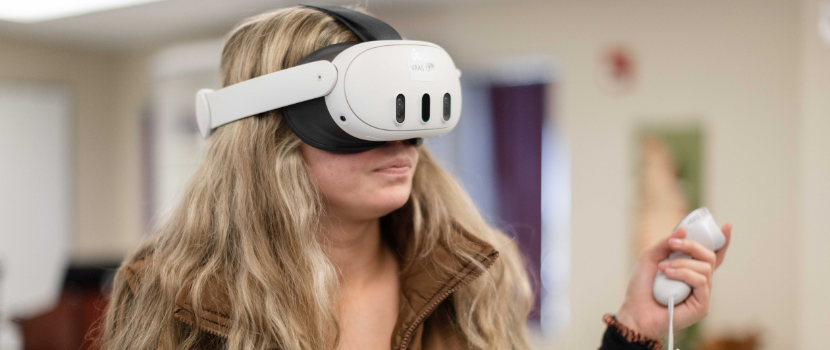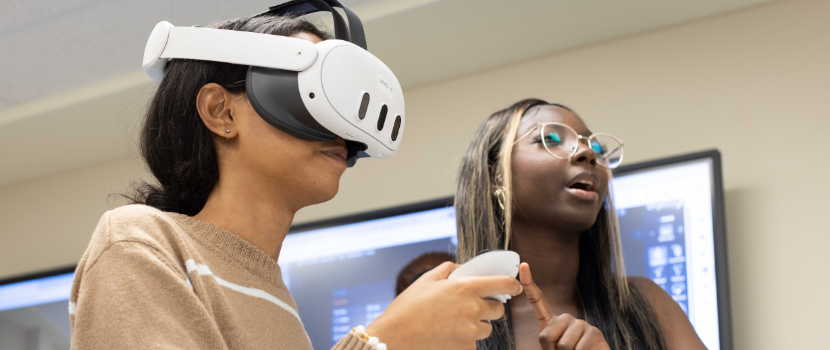
Saskatchewan Polytechnic program launches technology-driven pilot project
Practical Nursing students saw the human body in a new light, as they explored detailed 3D virtual reality models of it with specialized software.
Through a pilot project during the last academic year, students at Regina campus worked in pairs with a VR headset to learn about human anatomy and physiology in biology courses.
Students discovered renderings of the human body’s systems, from skeletal to muscular to cardiovascular. They slipped on a VR headset and were instantly transported into a 3D virtual world where they entered the chambers of the human heart, for example.
Practical Nursing instructor Mylena Medeiros says, “We accessed different layers of the organ and were transported into cavities, watching the function of bodily systems through ‘action mode’.”

Learning Technology trainer Keenan Flegel has worked with programs across Sask Polytech to provide faculty with tools, training and learning platforms to enhance student education, working behind the scenes to support the use of cutting-edge technology.
“There was a lot of positive buy-in. We found the majority of students were excited to use VR,” he says.
Creative Media program head Stephanie Morrison connected with Flegel to integrate VR into the curriculum. Through their collaboration, they worked with Medeiros to optimize the use of VR in a classroom setting.
Morrison sought to integrate extended reality in the classroom to improve student engagement and learning outcomes. Flegel and Morrison supported Medeiros through the VR purchasing process and trained her on how to use the new tools. As students started experimenting with the technology, she noted a difference in the classroom.

“Grades got better as did attendance, engagement and motivation. The bond created between students was different from previous years. It was such a phenomenon!” Medeiros says.
Through the Mediverse, students and instructors find themselves in a virtual space where they can zoom in to see specific details of the human body while watching educational videos. The combination of seeing filmed procedures while examining the human body provides an enriching experience says Flegel.
“A lot of learning outcomes may be hard to recreate and expensive to access. Some may involve risk. VR is safe and makes things possible that would be difficult to do. By using simulations, students get first-hand experience,” he says.
For example, students had the chance to practice dissections by using VR controllers to simulate the procedure.
Integrating VR was complex says Medeiros. “I love technology and I’m interested in it, but it was a learning curve for me. I had to change my teaching style, but the student engagement was worth it.”

She had a lot of content to cover through active learning and needed to develop different ways to evaluate students such as quizzes and VR presentations.
“The software puts students to work instead of passively listening. Active learning is the most effective way to retain information,” she says.
Alongside the VR headsets used in the classroom, students could also access an app and laptop software to continue their studies at home.
Medeiros, Flegel and Morrison’s work was showcased at the Society for Teaching and Learning in Higher Education Annual Conference in June. They presented the pilot project to post-secondary professionals from across Canada at the national event in Saskatoon, highlighting key successes and lessons learned—such as the value of providing one headset per student. The positive outcomes led the project to expand from Regina to Practical Nursing students studying at the Prince Albert and Saskatoon campuses in the coming academic year.
“There’s no way back, and I look forward to seeing the tech spread across all campuses. I believe new cohorts and instructors will benefit from it,” Medeiros says.
Learn more about Sask Polytech’s Practical Nursing program.

